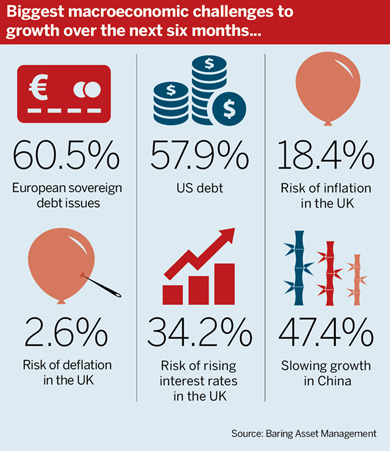The proportion of pension schemes with multi-asset fund exposure has risen to 83 per cent, up from 70 per cent just six months ago, as schemes look to control volatility and mitigate macroeconomic risk.
Multi-asset strategies hope to offer schemes a smoother ride and access to a wider range of assets, but investment experts previously warned of overestimating the performance of such funds as equity markets remain buoyant.

The survey released today by Baring Asset Management found that of the pension managers who recently increased or made their first allocation to multi-asset products, six in 10 had done so to reduce volatility, while two-fifths were looking to better match liabilities.
Barings interviewed 64 investment managers at UK public and private sector pension schemes. Other managers endorsed the trend.
“It is only recently that pension funds appear to have finally made the active decision to allocate capital, a trend that seems to have further to go,” said Georgina Taylor, product director of the multi-asset team at investment manager Invesco Perpetual.
Taylor added that the “disappointing” performance of balanced funds during equity market falls had contributed to the shift since last summer.
She also said while date-driven derisking has in the past prompted moves into lower-risk assets such as bonds, this approach could lead to schemes piling into this type of asset class at the wrong time.
“Bonds are not necessarily the best way to preserve capital, particularly right now, and so this approach may prompt a move into different asset classes at the wrong point in the cycle,” she said.
The Barings survey also found that of those managers who made changes to their fund, only a third did so to achieve greater returns.
Aniket Das, vice-president in the manager research team at consultancy Redington, said its clients mostly use multi-asset strategies as part of the growth segment of their portfolios.
“The decision to use these strategies is generally driven by the desire to increase expected return per unit of risk rather than simply to increase expected returns,” Das explained.
The National Association of Pension Funds’ 2013 annual survey found 30 per cent of defined contribution schemes offered a multi-asset strategy, and 19 per cent a diversified growth fund, as part of their default sections.
Das said both smaller defined benefit schemes and DC funds could also use the strategy to access tactical asset allocation benefits, adding: “Within DC, multi-asset strategies are commonly being used as part of the lifestyling structure where they may complement or replace an equity allocation.”
Sovereign debt concerns
The Barings survey respondents were asked what factors they perceived posed the biggest risk to investment returns over the next six months.
More than 60 per cent cited European sovereign debt, followed by US debt levels (58%) and the slowdown of Chinese growth (47%). Just over one-third viewed rising UK interest rates as a potential hazard.
Tim Giles, partner in consultancy Aon Hewitt’s investment practice, said macroeconomic factors continue to drive the relative value of asset classes.
“Many investors now use the medium-term asset outlook alongside a long-term strategic asset allocation to enhance the return from their assets by tilting their portfolio and intelligent rebalancing,” he said.














